1924 : The first Winter Olympic Games
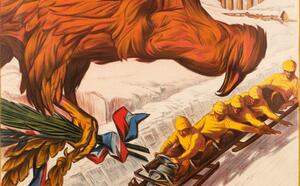
2024: CENTENARY OF THE FIRST WINTER OLYMPIC GAMES IN CHAMONIX
Birthplace of the first Winter Olympic Games in 1924, Chamonix is celebrating the 100th anniversary of this iconic event that greatly contributed to the resort’s international reputation.
Popular since the 19th century with a summer mountaineering clientele, the small town at the foot of Mont Blanc took on a new dimension following the organization of the 1924 Games and truly initiated the shift towards winter sports.
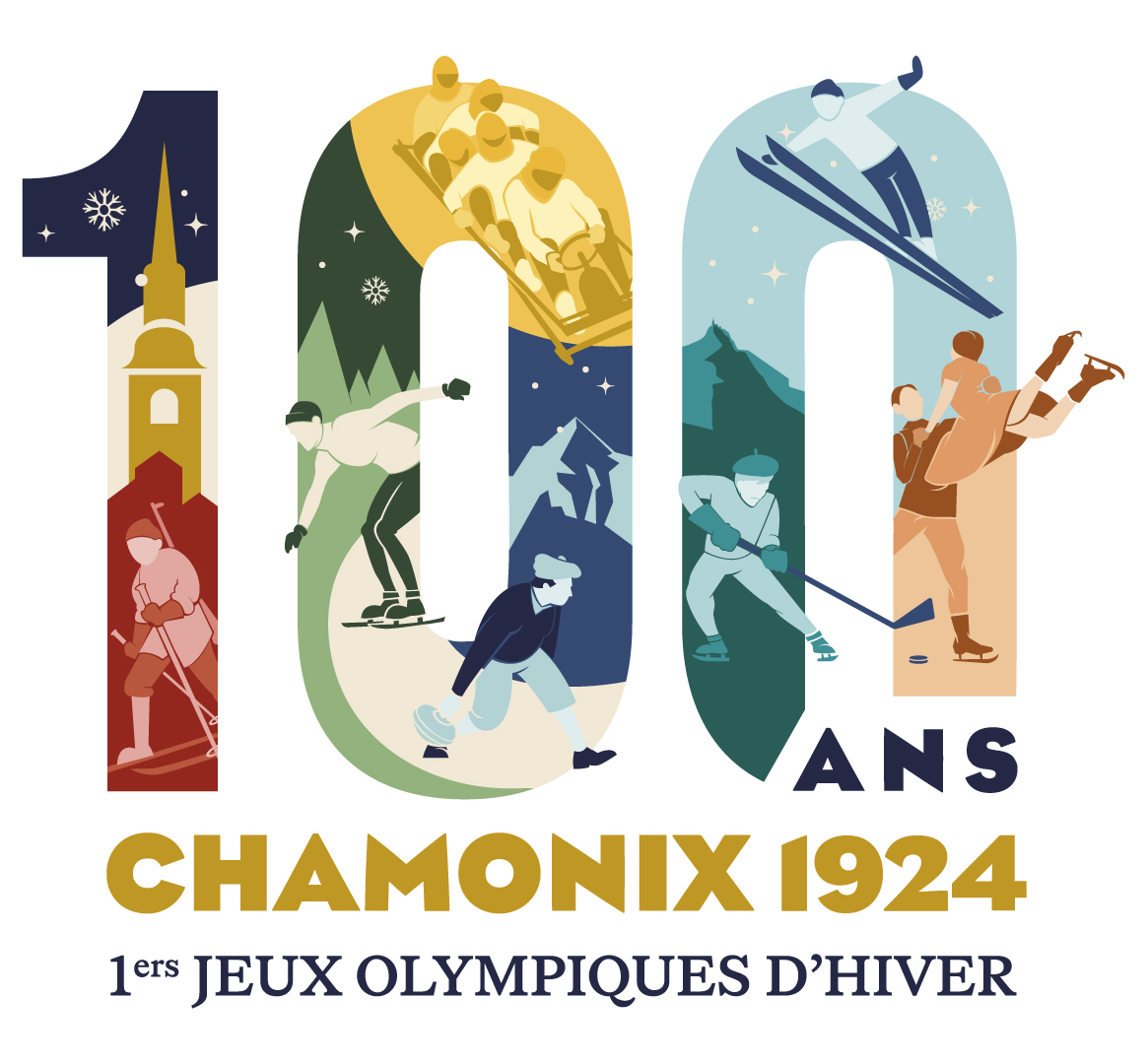
On 25th January 1924, it was cold enough to split rocks in Chamonix. A radiant sun illuminated the valley as Gaston Vidal, Under-secretary of State, formally declared the solemn words:
"I proclaim these Winter Games of Chamonix, held on the occasion of the VIIIth Olympiad, to be open"
The flags flew in the wind of the stadium and the parade of participating nations commenced in alphabetical order: at the head Austria with only skaters, (downhill skiing was a complete unknown), then Belgium with its hockey players, Canada, Estonia, the United States, Finland, France, Great Britain, Italy, Lithuania, Norway, Poland, Sweden, Switzerland, Czechoslovakia and Yugoslavia.
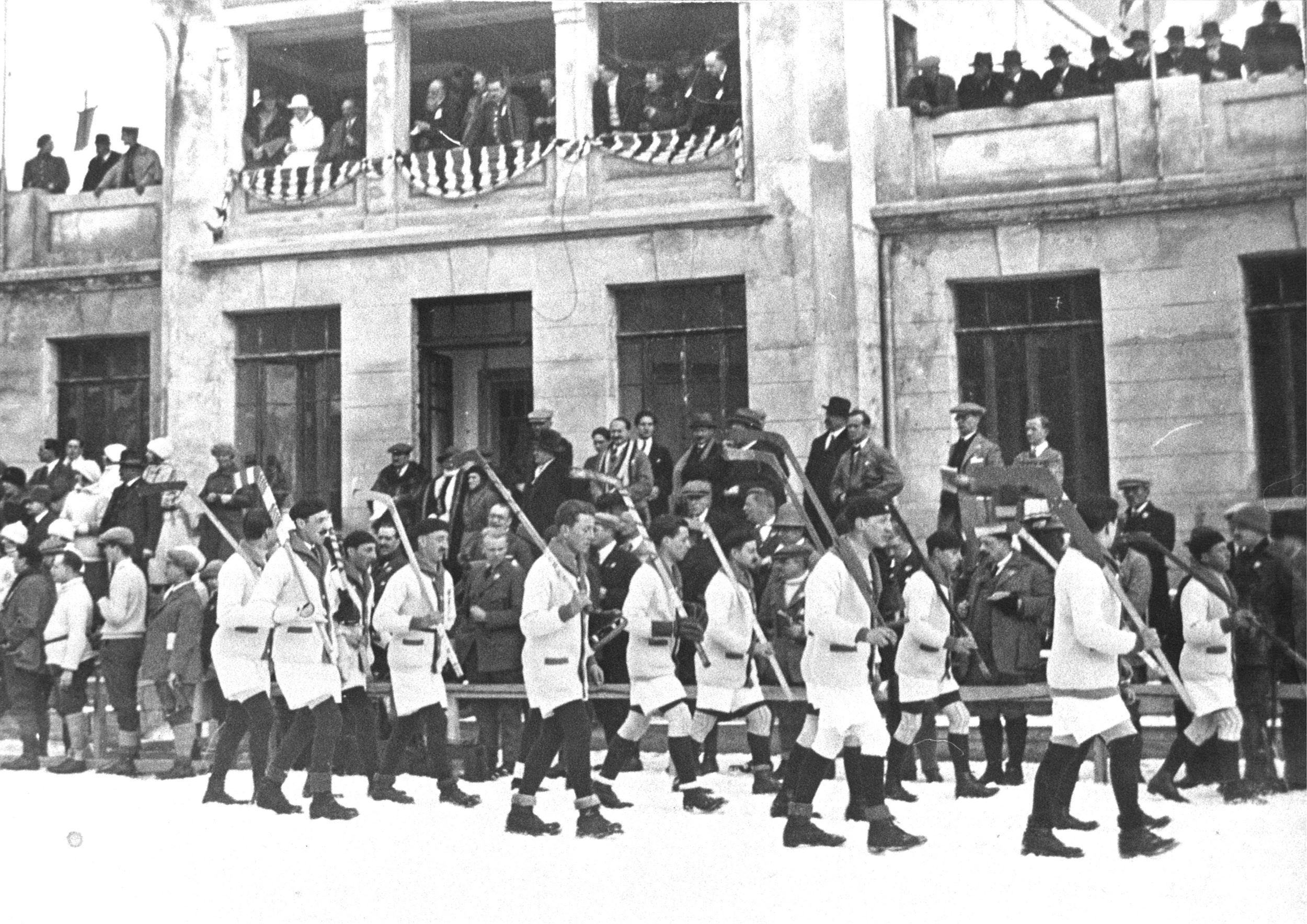
© Fonds Gay-Couttet
In 1924, there were six sports in the Olympic programme :
Hockey, speed-skating, figure skating, curling, bobsleigh and, of course, skiing, where only Nordic disciplines for men were proposed.
Some 300 competitors from 16 nations experienced the adventure of what observers at the time were to describe as "virile and stimulating duels, combining strength, agility, youth and friendship". Nearly10,000 spectators attended the Games.
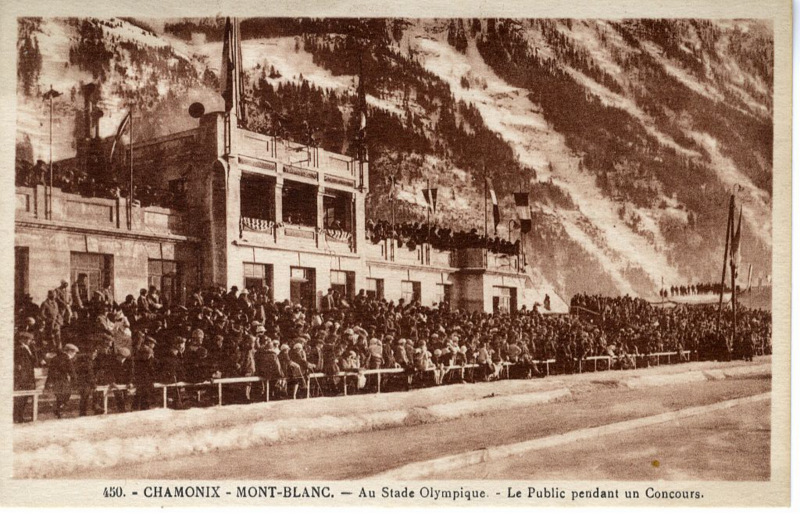
© Collection Musée Alpin Chamonix
The sports facilities built for the Games were, at the time, the largest in the world!
Designed to break all length records, the Mont aux Bossons ski jumping ramp, allowing jumps of 60m, is still occasionally used today, demonstrating its relevance and the enduring tradition of ski jumping in the valley.
In the forest above Les Pèlerins, the remnants of the bobsleigh track are still visible. Its construction is remarkable as it was done using dry stone techniques, a craftsmanship recognized as UNESCO Intangible Cultural Heritage. This track was the most sophisticated in the world.
.jpeg)
© Denis Cardoso
Finally, the Olympic Park, renamed as such by IOC President Juan Antonio Samaranch in 1984, comprised an ice rink of over 36,000 square meters capable of hosting two hockey surfaces and two open areas for figure skating, a 400-metre speed skating track and a curling rink. It also encompassed the Sports Pavilion, serving as the venue for the opening and closing ceremonies, as well as the starting and finishing points for cross-country and military skiing events.
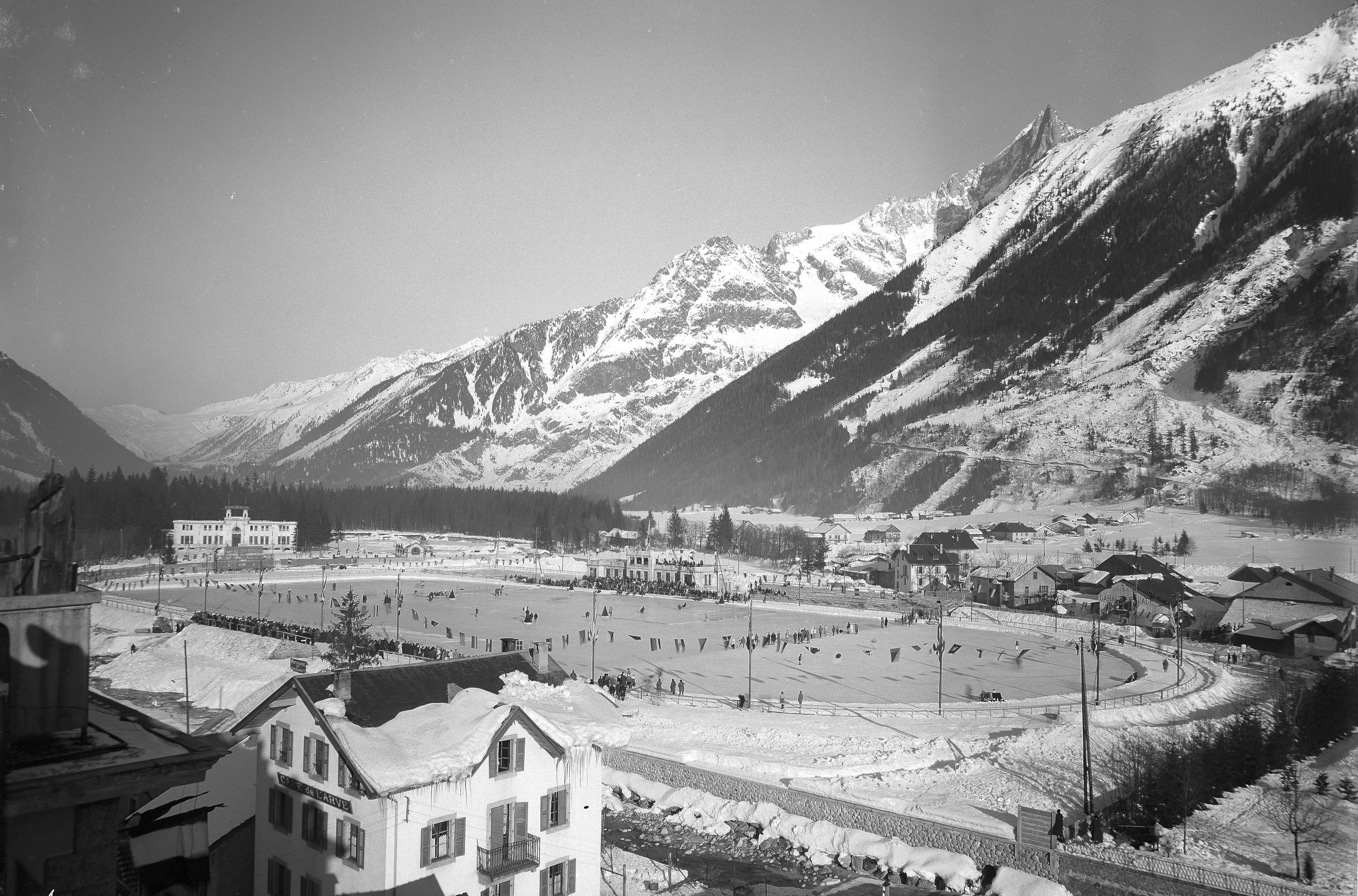
Archives Municipales - Fonds Gay-Couttet
While very little remains of the original ice rink and Pavilion, this area is still the sporting heart of the town today. It hosts the ice rink, the speed skating stadium, the Karine Ruby Sports Center, the Robert Baisse Cross-Country Ski Centre, and the Richard Bozon Sports Centre, including the pool and the Coubertin multisport hall!
Achievements
A solid team of skiers with a strong Chamonix contingent had the honour of representing France in the five events of the time: long distance skiing (50km), cross-country skiing (18km), ski jumping, combined race (jumping and cross-country), and the 30km military race in teams of four.
Captain of this first French team, the Chamoniard Alfred Couttet confided honestly:
"I wasn’t able to confirm whether or not I was an effective trainer because, being lodged in a barracks where an entire battalion had been decimated by flu, the French racers presented themselves at the start line for the nordic race, coughing, spitting, handkerchief permanently in their hands. They were in such a sad state that they were unlikely to perform well."
The French had to be content with three bronze medals, thanks to the patrol race, (a sort of team biathlon), the curling team and the figure-skating couple, Joly and Brunet (gold medalists in 1928 at the Saint-Moritz games).
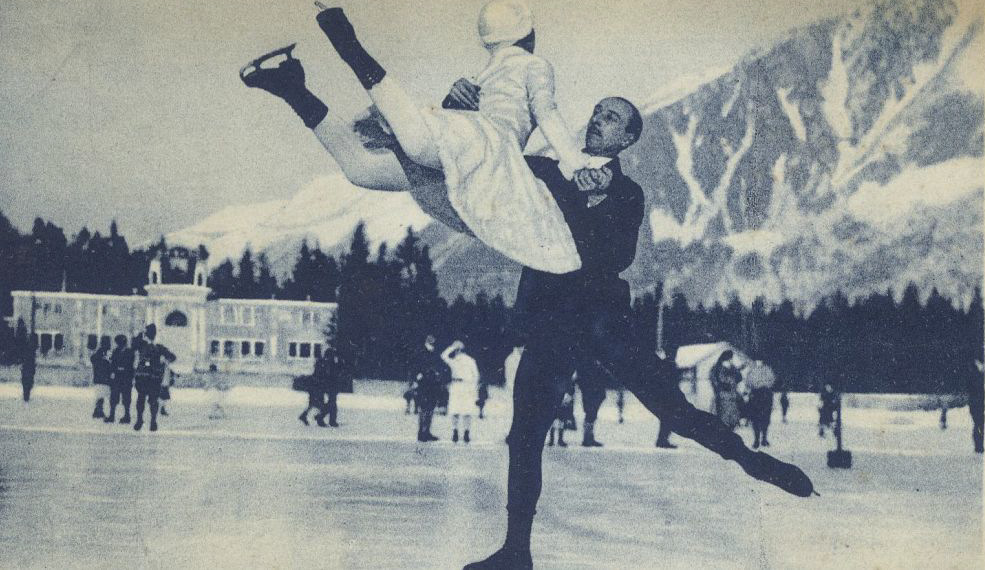
© Fonds Gay-Couttet
The Norwegians and the Scandinavians dominated most of the races and notably Thorleig Haug who was to become the first triple Olympic champion in history, winning the 18 kilometres, the 50 kilometres and the combined!
.jpg)
© Collection Musée Alpin Chamonix
Contrary to the figure-skating, which received a muted welcome, the hockey tournament was an immense success. The final between the United States and Canada would be memorable. 2,003 paying spectators crowded in to watch the famous Canadians, who had previously thrashed Great Britain (19-2), Czechoslovakia (30-0), Sweden (22-0) and Switzerland (33-0!!).
This ferocious final resembled a street fight! It ended up with numerous injuries. In fact the players did not wear any protection, no shin guards, no gloves, no helmets, only an elegant beret or cap. The Canadians finally dominated the Americans in fists and in points: 6-1 ! This would be the highlight of the games.
.jpg)
On 5th February, the games finished, although the general euphoria persisted, with not a cloud on the horizon. Baron Pierre de Coubertin made a solemn speech. It was clear that the Winter Games had been accepted into the heart of the Olympic family.
"… among the numerous spectators, are many who have discovered sports whose beauty they had never suspected. They have perhaps been astonished to find these sports so physical and aggressive. This is because people have been misled by hygienists and pedagogues who confuse physical education with sport. The first is a good thing for all, the latter is much more; it is a school of audacity, energy and will-power"!
In 1926, the "International Winter Sports Week of Chamonix-Mont-Blanc" would officially receive the title of the "First Winter Olympic Games"
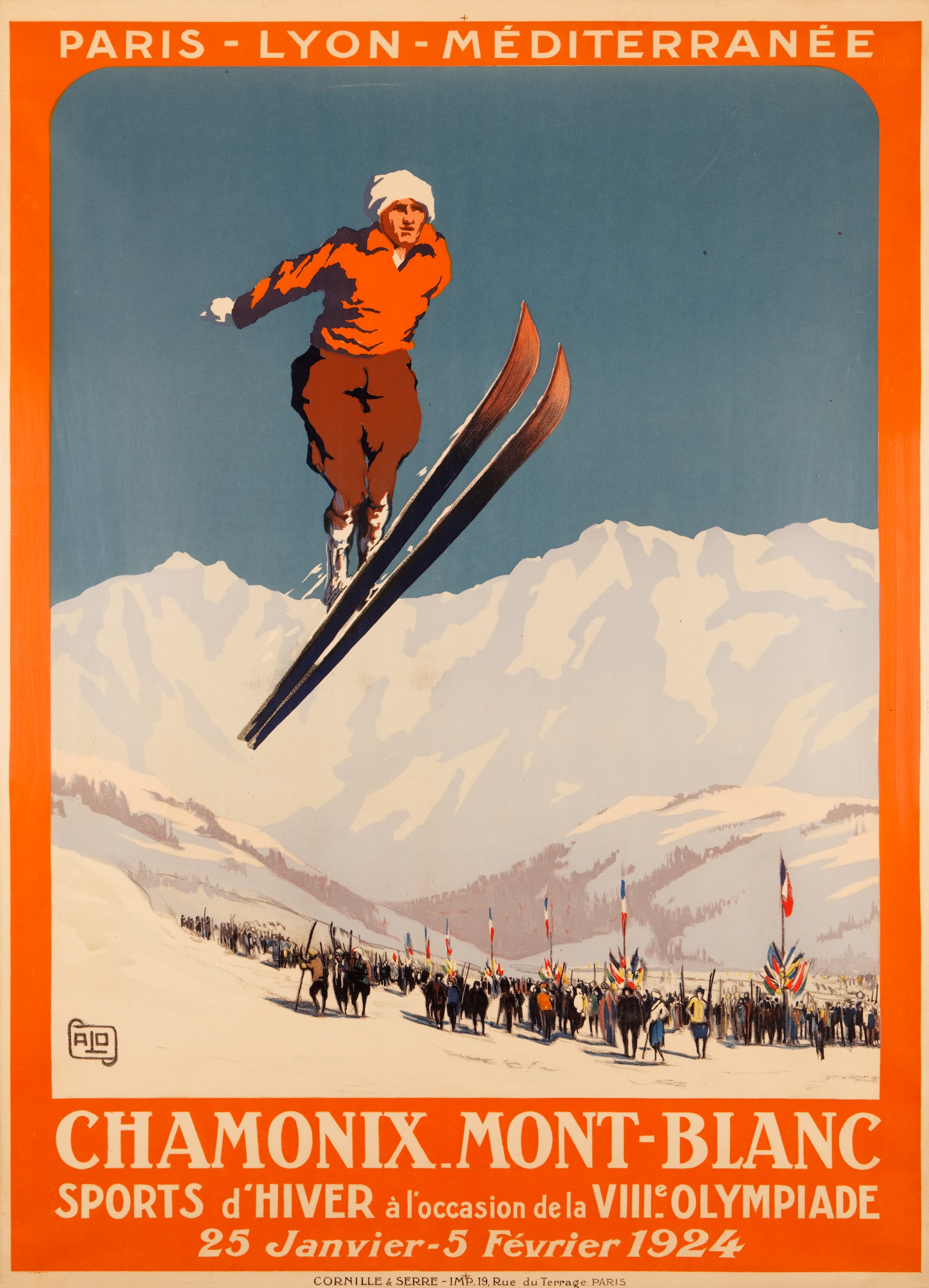
Consult the original programme
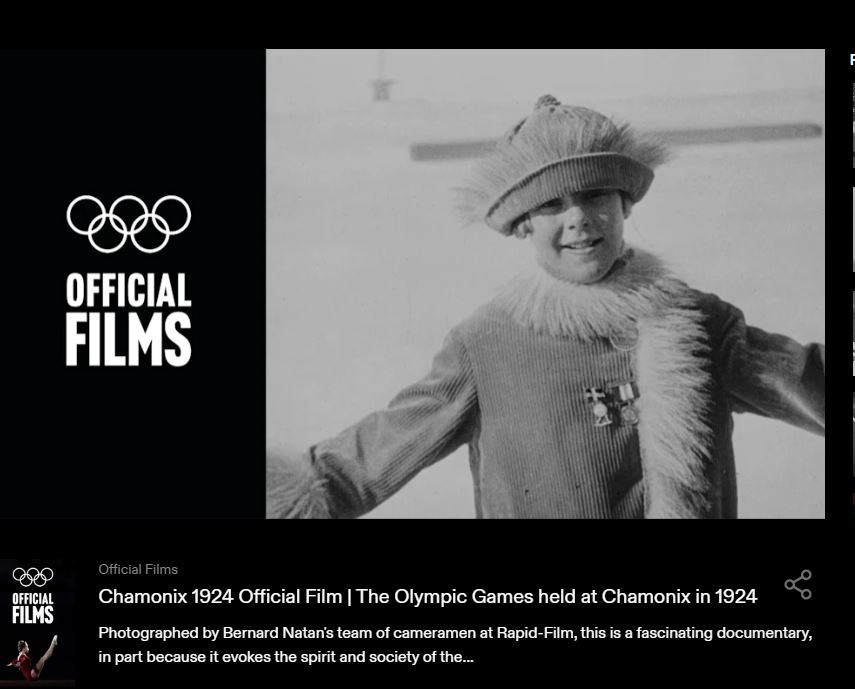
View the official Olympic Film
A few anecdotes
A STAR IS BORN
The French writer Roger Frison-Roche described with emotion that this parade would be forever engraved on his memory, down to the finest detail. One particularly moving sight in the Norvegian delegation, next to a "blond giant", was a small girl of about twelve, "so delicate in her little pleated skirt and her blazer in club colours" - it was the ice-skater Sonia Henie. At the age of 11, Sonja was the youngest athlete to have participated in the Olympic Games. She would later become a triple Olympic champion before retiring from the ice rinks in 1936, following the Garmisch-Partenkirchen Olympics, to grace the Hollywood red carpets and pursue a career as an actress.
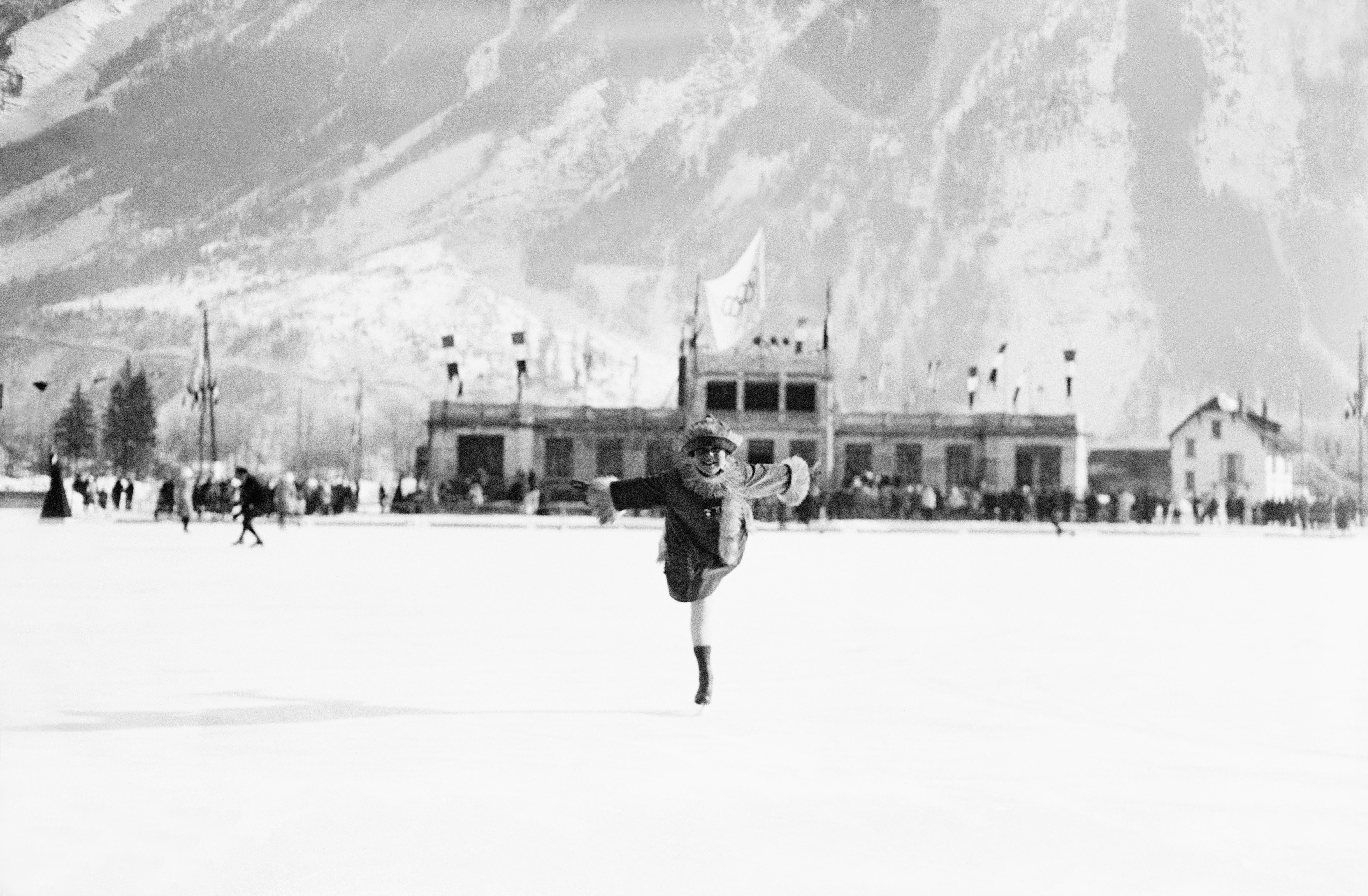
© Olympic Museum Lausanne - Sonja Henie
THRILLS FOR THE ICE RINK
For these games, the world's largest ice rink was constructed in record time. A few weeks before the D-day, 1m70 of snow fell over the valley in just twenty-four hours: an unprecedented event in the memory of Chamonix residents! It took several weeks, with the help of the army and hundreds of locals, to completely clear the massive stadium and the surface of the ice rink.
BROOMS IN THE PARADE
On January 25th at 2:30 PM, starting from the Town Hall, the Chamonix Guides Association lead the procession, followed by the Sports Union, the Ski School... Athletes from different delegations were all dressed in their sportswear, some carrying their skates, others their skis, a few towing a bobsled, and curling players proudly displaying their brooms!
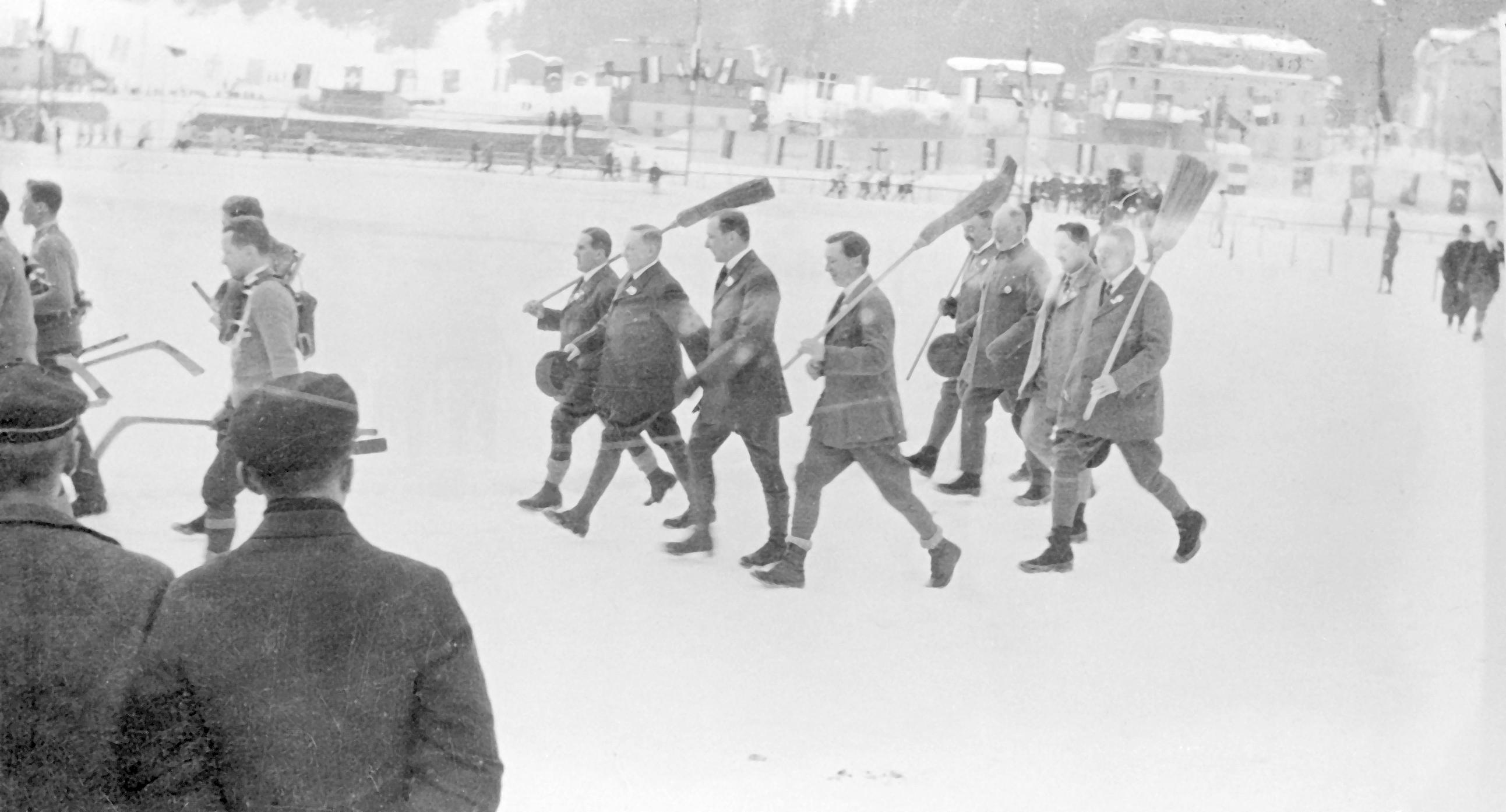
© Musée Olympique Lausanne
DELAYED PODIUM
In ski jumping, the length and style of the jumps were taken into consideration to calculate the ranking. In 1924, on the Bossons ski jump, American jumper Anders HAUGEN, of Norwegian origin, found himself in 1st place with the longest jump, but his style score relegated him to 4th place.
Fifty years later, a Norwegian specialist in Nordic combined looked into the matter and recalculated the scores. HAUGEN was back on the podium! He went to collect his bronze medal in Oslo in 1974, at the age of 86!"
JOURNALISM AT THE GAMES
According to Roger Frison-Roche, secretary of the games "there were a minimum of 200 journalists in Chamonix, who submitted at least 100,000 words during the period of the Games (…) the bulk of the dispatches were submitted between 6am and 10pm. It was therefore necessary to provide not only a car which, in the event of a disaster, would carry the telegrams to Annecy, but also two or three motorcycles. In addition, the opening of the PTT was requested until 1.30am. with six telephone wires and the installation of a stamping machine..."
OLYMPIC SPIRIT - TANGIBLE AND INTANGIBLE HERITAGE
Subsequently, the Chamonix Valley naturally became a part of skiing history and hosted numerous international competitions, including the World Ski Championships in 1937 and 1962, as well as around twenty editions of the Kandahar (Alpine Skiing World Cup) since 1948; the latest one is scheduled for February 2024, on the famous “Verte” des Houches.
The Olympic spirit reigns in this valley, where sports have become a genuine tradition: since 1924, Chamonix has been represented by one or more athletes in each of the 21 editions of the Winter Olympic Games."
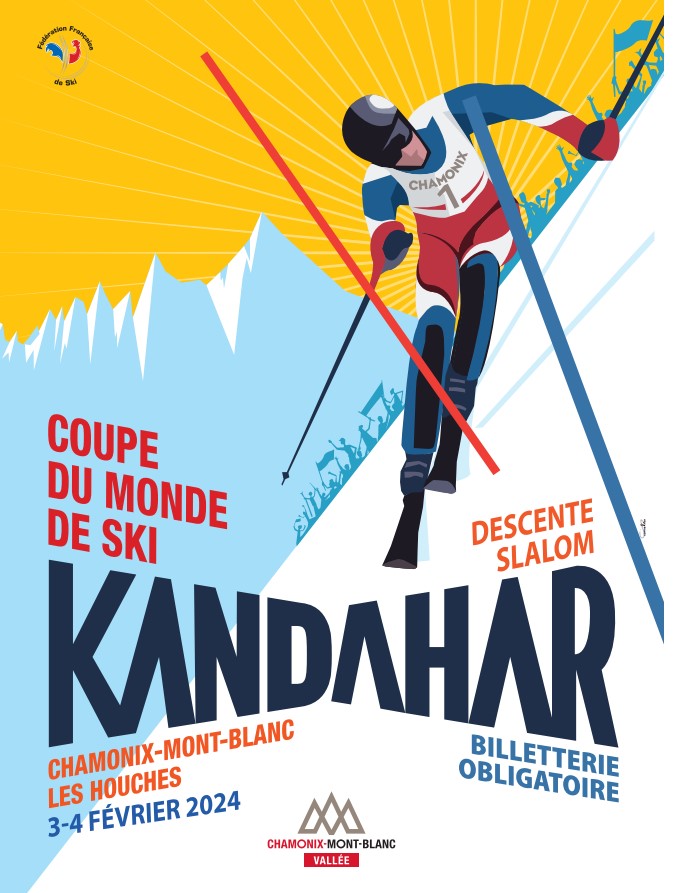
THE HIGHLIGHTS OF THE 100TH ANNIVERSARY CELEBRATION
Initiated in 2023 in collaboration with the Paris 2024 teams, the celebrations include an extensive events’ programme: sporting events, official and popular ceremonies, cultural exhibitions, publication of a reference book, and engagements in educational institutions.
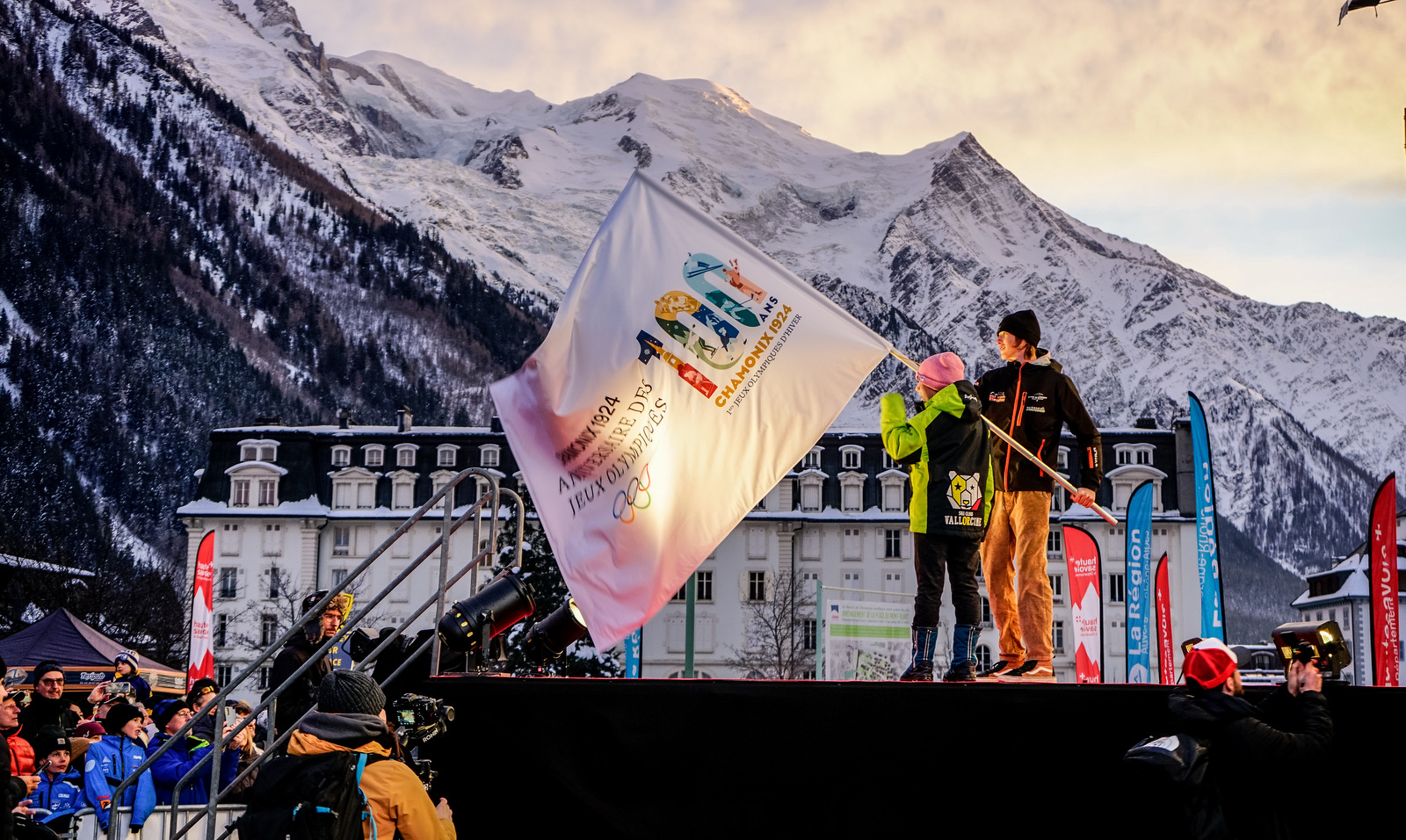
2 December 2023:
Book release in English "Chamonix 1924: the first Olympic Winter Games"
From 2 December 2023 to 15 March 2025:
Exhibition : the invention of the Olympic Winter Games at the Maison de la Mémoire et du Patrimoine in Chamonix
From 2 December 2023 to 29 June 2024:
Exhibition : Champions at the Olympic Games at the Maison de village in Argentière
From 18 to 21 December 2023:
7th edition of the “Micros d’Or (Audi-Visual Festival), on the eve of the Olympic centenary.
25th January 2024: D-Day!
100 years after the opening ceremony of Chamonix 1924
03 & 04 February 2024:
Kandahar Alpine Ski World Cup – downhill and slalom.
100 years after the creation of the International Ski Federation (FIS) in Chamonix-Mont-Blanc
16 March 2024:
Official and popular ceremony of the 100th anniversary of the 1st Olympic Winter Games in Chamonix 1924
23 June 2024: Olympic Day
Chamonix-Mont-Blanc welcomes the torch relay of the Paris 2024 Olympic Games
A story that begins in 1892
It was in 1892 that the first pair of skis arrived directly from Norway, in the baggage of a Chamoniard traveller… maybe a Tairraz, or a Couttet, or a Simond or then again a Charlet… In any event it was a local who brought the skis to Chamonix.
These planks were interesting to look at, but left the population rather perplexed. What were they for? How did one use them? Come what may, local craftsmen immediately got to work producing replicas, anticipating that these wooden planks could provide a means of locomotion during the long winter months. Four years later it was for professional reasons that Doctor Payot, aged 24, was using them to travel the valley. Thanks to the skis, he was able to visit more sick people each day and to provide assistance to women in labour. He was officially the first skier in the valley. Doctor Payot developed a passion for the sport!
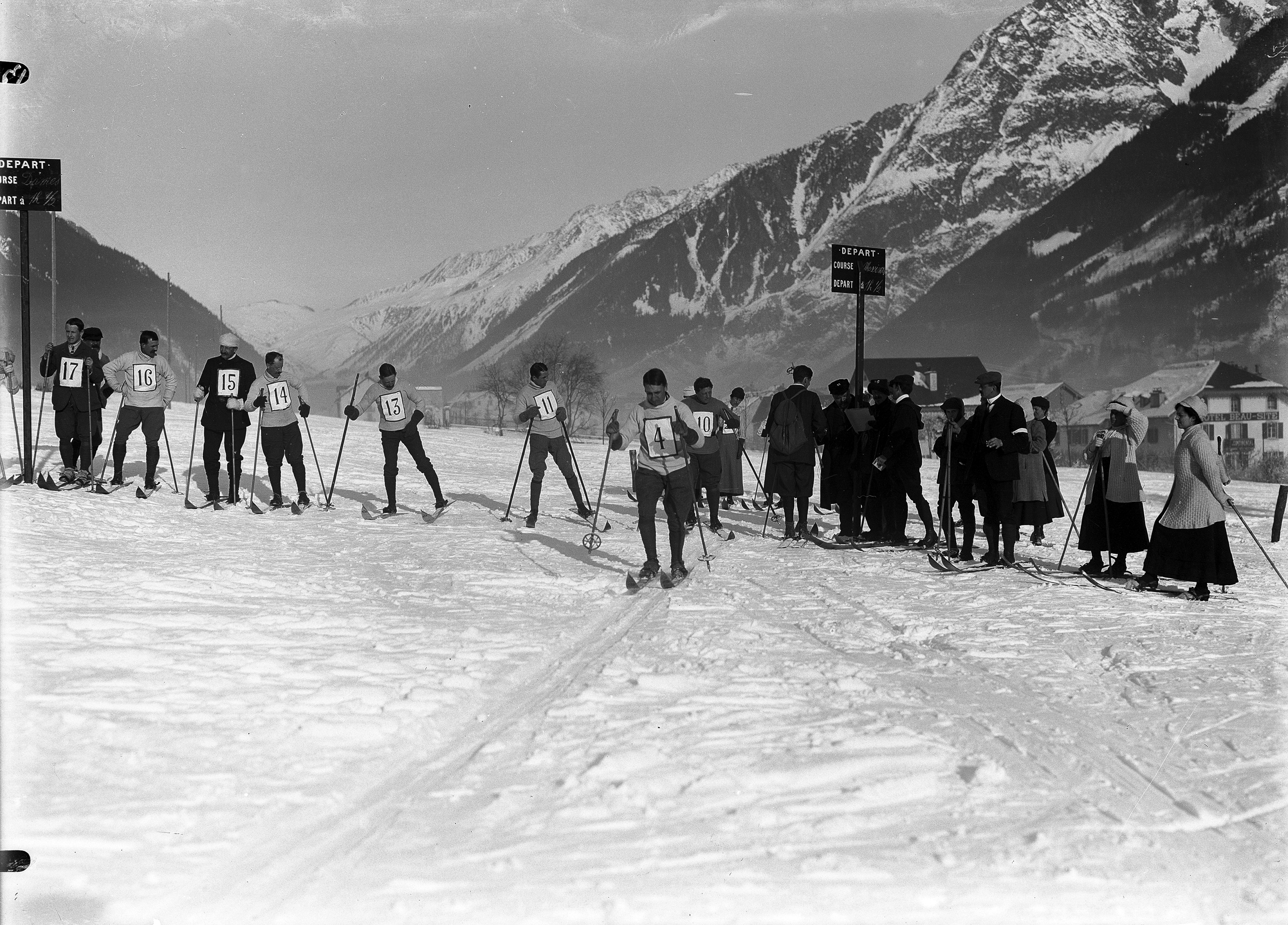
In 1907, immediately after having founded the Club of Alpine Sports, Doctor Payot organized the first local race. It took place on 12th and 13th January, "with splendid weather, ideal powder snow, a temperature of -5°C and glorious sunshine".
Thirty-six racers met on the superb slopes which led into the Brevent couloir. A dense crowd filled the sidelines. There was one rule: to go up and come down as quickly as possible. Luge and ski jumping were also on the programme. Out of twenty-five contestants, nineteen landed in the decor! Nevertheless the day passed smoothly and without a single accident. The success was total - it was time for something bigger.
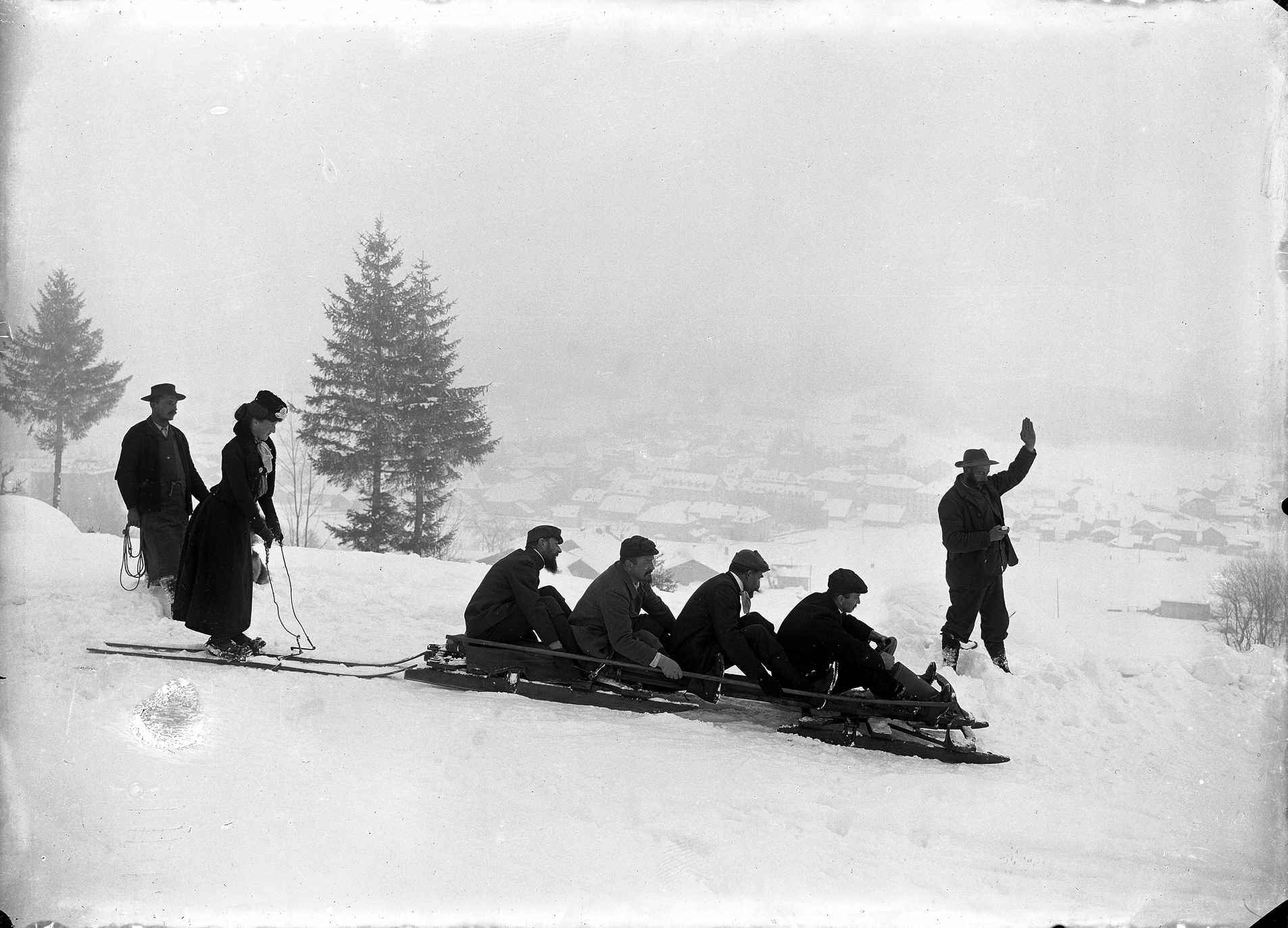
So the following winter, again thanks to the good Doctor Payot, Chamonix hosted the second International Competition, founded in Montgenèvre the previous year. This time the media were present and the chroniclers went into rapturous eulogies:
"No summer sport is its equal for perfect sensuality, sheer force, satisfaction and joviality!" wrote the newspaper L'Illustration.
Alas, despite the general euphoria, this International Race ended on a sad note. Dr Payot was suddenly stricken with bronchial pneumonia, presumably contracted whilst waiting to greet the Norwegian team at Chamonix station in glacial temperatures!
A VISIT TO SWITZERLAND
Following the success of this meeting, Chamonix, the world-famous summer destination became a "winter resort".
The Hoteliers' Union and the Alpine Sports' Club got together to reflect upon "ways to improve the evident shortcomings of facilities and the organization of Competitions within the valley".
The impetus was provided by the rail company, PLM (Paris-Lyon-Marseille) which had every incentive to encourage the development of the resort. It proposed a reconnaissance of the renowned Swiss ski resorts like Saint Moritz and Davos.
So it was that on 13th February 1908, a delegation comprising of the owners of the two biggest Chamonix hotels and two PLM inspectors left Chamonix station at 5pm and arrived in St Moritz at 4pm the following day!
"Being used to our incomparable sites, our glaciers and peaks, not to mention the magnificence of the Mont-Blanc range and the grandness of our valley, we found that from no point of view did the mountains, which were quite low, present the beauty and charm of those which we possess». Such were the first impressions which appeared in the report. But the rest undoubtedly shows their great admiration for all the « superb and meticulously maintained facilities…"
Nothing escaped the Chamoniard delegation. They learned a lesson from everything: access to the resort, the development of hotels, prices, signs, techniques for maintaining ice-rinks, ski and bob-sleigh runs. They attended competitions and noted every detail: logistics, safety and time-keeping.
The PLM inspectors were astonished to count seven trains a day bringing passengers not only from Basel, Lucerne and Zürich, but from London and Paris, whilst only three trains per day reached Chamonix. According to the hoteliers, the trains were not fast enough... The creation of Express trains would be one of the principle propositions at the end of this reconnaissance tour.
Lausanne, June 1921: Paris was the city selected for the «Celebration of the VIIIth Olympiad of the modern era in 1924 » It goes without saying that at the time these were summer games. However, on Sunday 5th June 1921, members of the International Olympic Committee seriously considered adding Winter sports to the Olympic programme. They considered that, "apart from the Nordic countries, there are certain central and eastern European nations who are in a position to organize a competition of sports on snow and ice, which, by their robust and splendid demonstration of modern physical activity, would be worthy of a place in the Olympic games agenda".
The Scandinavians, so proud of their "Northern Games" which they had been organizing for several years, were stubbornly obstructive of this new initiative. Consequently, the IOC decided that, without incorporating the “Winter Games” as an integral part of the Olympic programme, they would offer them their patronage for the organization of the event during the VIIIth Olympiad… The event would be named the "Week of Winter Sports", an obscure formula to acknowledge the birth of the first Winter Olympics!
It remained to decide where the Winter Games should be held. Several resorts were candidates, but certain practical and climactic conditions necessary for the organization were imposed: a top-quality ice-rink; snow in sufficient quantity for the ski and bobsleigh races and adequate accommodation facilities.
Chamonix, with its significant hotel infrastructure, and being the only French resort directly accessible by train (since 1901), was a natural choice. The town was selected.
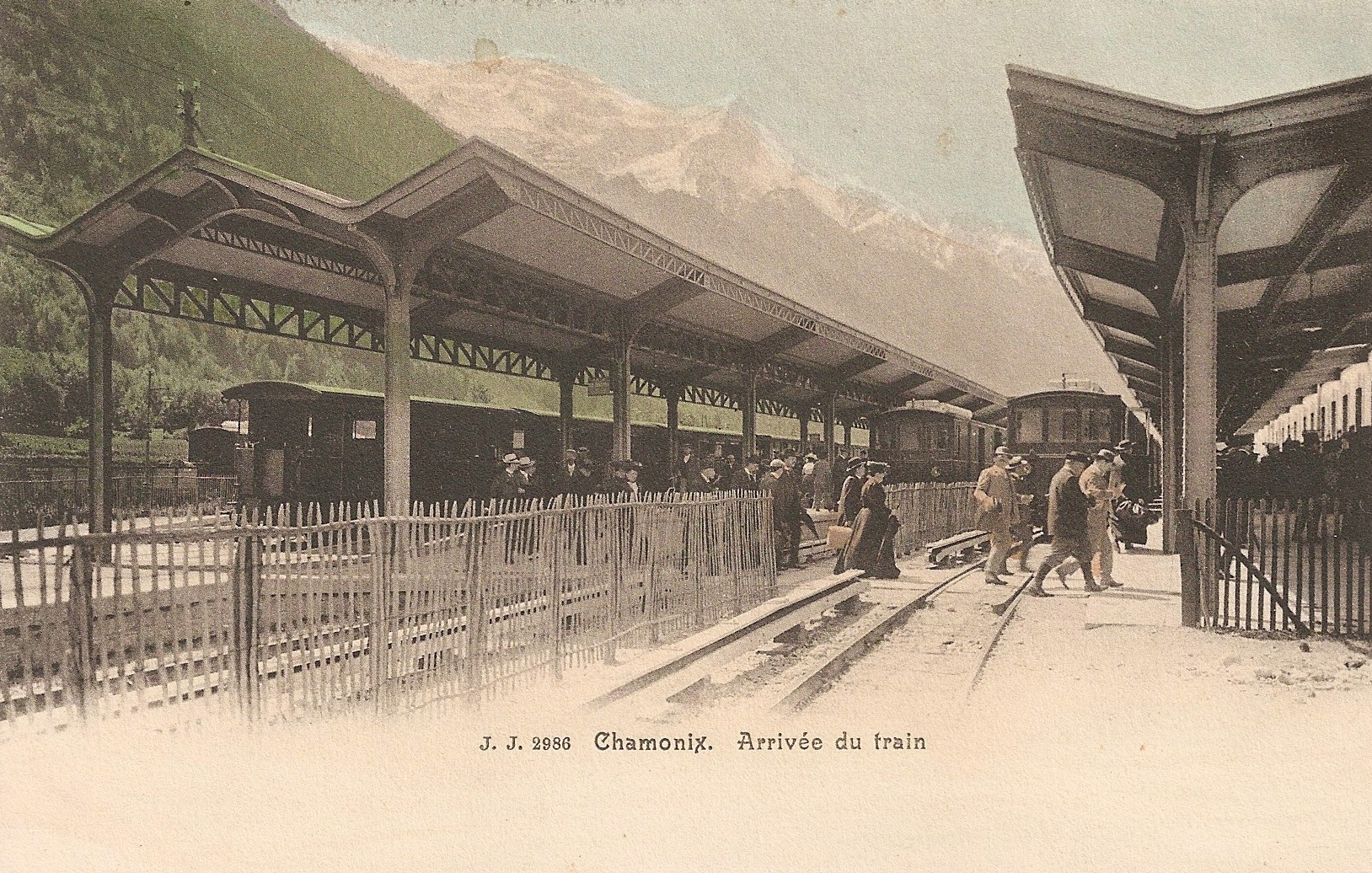
A contract was signed between the IOC, the French Olympic committee and the municipality of Chamonix on 20 February 1923. On November 1st the ice-stadium was to be delivered, that is to say an ice-rink of over 36,000 m2 capable of holding two ice-hockey pitches, and two open areas for figure-skating ; a 400m speed-skating rink and a curling stadium. It was to be the biggest in the world, surpassing even that of Davos.
Work began on 31st May, five months before the deadline. Roger Frison-Roch, a twenty year old fresh from Paris, assumed the role of secretary to the Winter Sports in-resort committee.
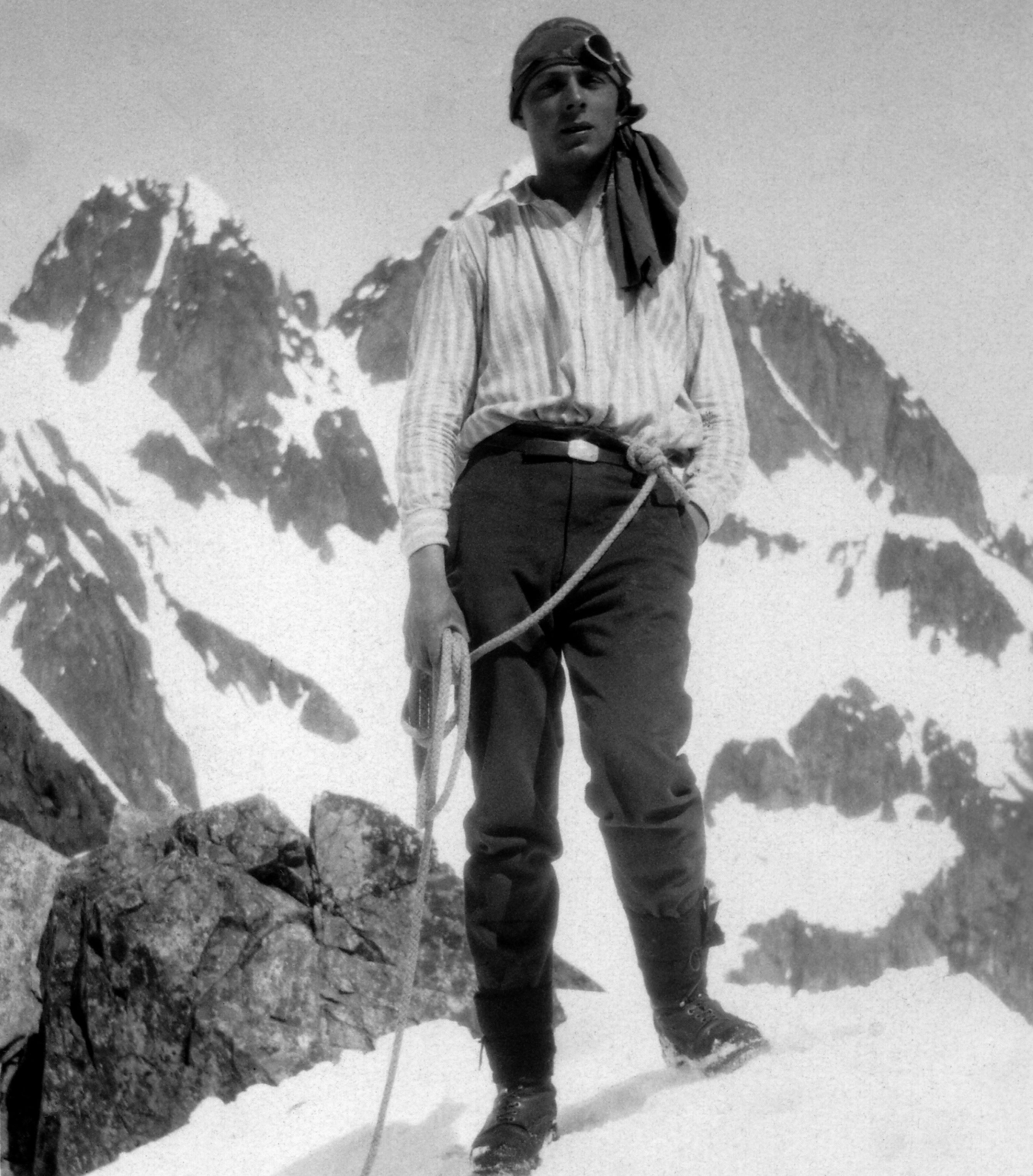
© Archives municipales Chamonix
In 1974, he recalled his first impressions:
"Even nowadays, with the means of modern technology at our disposal - bulldozers, skyscrapers etc… such a project would appear to be impracticable! It soon became obvious that the stadium would never be ready on time because the autumn and the ice would be arriving. So round-the-clock shifts were instituted; day and night they dug, transporting the necessary hard-core with a tenacity that aroused the admiration of specialists and the virulent criticism of those who had yet to grasp the importance of the Games for the future of Chamonix."
Despite all these efforts, the stadium could not be delivered until December....and the opening ceremony was set for the 25th January! As soon as the major works were finished, the « ice team » set to work immediately. They hosed the stadium with water and the cold did the rest. The ice-rink had a sheet of ice perfectly smooth and hard. Meanwhile they began to lay-out the cross-country ski tracks as the snow fell steadily.
"Christmas was approaching, the winter visitors flocked to Chamonix, and the horse-drawn sleighs travelled the snow-covered streets cheered by the joyous sound of sleigh-bells. The town was bursting with excitement."
And just when Chamonix thought it was ready.....disaster! No-one in living memory had ever seen such a quantity of snow fall, more than a hundred and sixty centimetres of snow fell on the valley in twenty-four hours! It was necessary to clear the stadium, re-make the tracks.... consternation!!
"People were recruited from everywhere. Soon there were six hundred workers toiling day and night with spades to clear the snow off the ice. The snow was taken away with hand-pulled sledges. It had consolidated and offered more and more resistance. The work continued for the first three weeks of January".
As hope returned, another blow was dealt because the snow began to thaw! An avalanche above the town cut off the railway line, the ice-rink turned into a lake...The organization considered cancelling the Games, but in extremis, the cold temperatures returned at last. Huge sighs of relief....